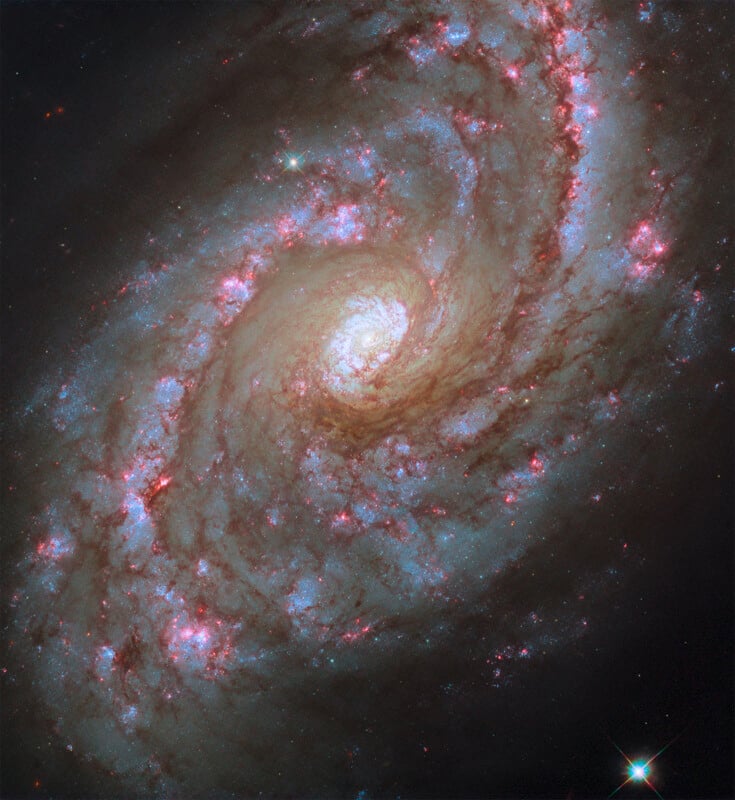Although the Hubble Space Telescope is 34 years old, it can still deliver amazing photographs from space. Hubble’s latest target is the grand spiral galaxy NGC 5248, located 42 million light-years from Earth in the constellation Boötes.
Also known as Caldwell 45, NGC 5248 is one of the most famous Messier objects and a common target for amateur astronomers on terra firma.
“One of the so-called ‘grand design’ spirals, with prominent spiral arms that reach from near the core out through the disk,” NGC 5248 is visually stunning. Hubble captured its beautiful colors and spirals primarily in visible light, using six filters: five optical (ranging from 336 to 814 nanometers) and one ultraviolet (275 nanometers).

NGC 5248 was captured using Hubble’s Wide Field Camera 3 (WFC3), installed to the telescope in low-Earth orbit during an upgrade mission in 2009. “WFC3 is designed to ensure that HST maintains its powerful imaging capabilities until the end of its mission, while at the same time advancing its survey and discovery capability through WFC3’s combination of broad wavelength coverage, wide field of view, and high sensitivity,” the Space Telescope Science Institute (STScI) explains.
WFC3 combines a pair of optical/ultraviolet CCD image sensors with a near-infrared HgCdTe array. By combining these different sensors and its litany of filters, Hubble’s WFC3 can deliver high-resolution images from 200 to 1,700 nanometers.
The improved imaging capabilities of the WFC3 have significant implications for astrophysical research. In the case of NGC 5248, scientists are interested in how the galaxy is impacted by rotational energy and gas flows. The galaxy’s intense “starburst” star-forming regions have played a crucial role in the galaxy’s formation and shape. The galaxy has two active, ring-shaped starburst regions surrounding its nucleus, each filled with young clusters of stars.
“These ‘nuclear rings’ are remarkable enough, but normally a nuclear ring tends to block gas from getting further into the core of a galaxy. NGC 5248 having a second ring inside the first is a marker of just how forceful its flows of matter and energy are! Its relatively nearby, highly visible starburst regions make the galaxy a target for professional and amateur astronomers alike,” NASA writes.
The galaxy’s beautiful spirals feed gas from its outer reaches back into the inner star-forming regions, and some materials even reach the galaxy’s central black hole. At a high level, the galaxy’s iconic shape is mainly due to the inflow of gas.
Image credits: ESA/Hubble & NASA, F. Belfiore, J. Lee and the PHANGS-HST Team



